
Beylerbeyi (Turkish name: Beylerbeyi Sarayı) is a 19th-century neo-Baroque palace in Istanbul, which is surrounded by gardens and served as a summer residence and accommodation for high-ranking guests of the sultans of the Ottoman Empire.
Today it is a palace museum, where you can visit the palace halls, and in the adjacent territory stroll through the gardens and terrace by the waters of the Bosphorus.
The Beylerbeyi Palace is located on the Asian side of Istanbul, near the Bosphorus Strait, in the Usküdar district.
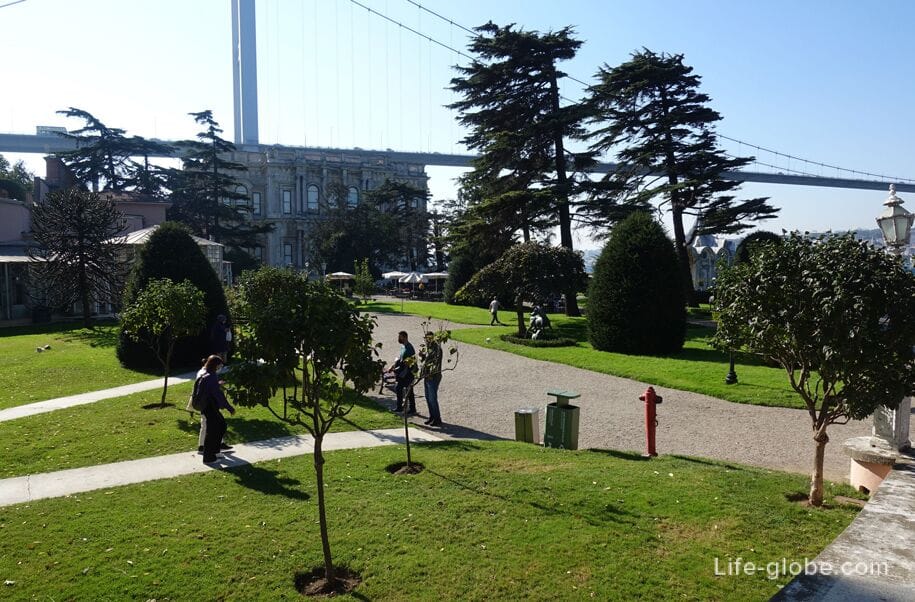
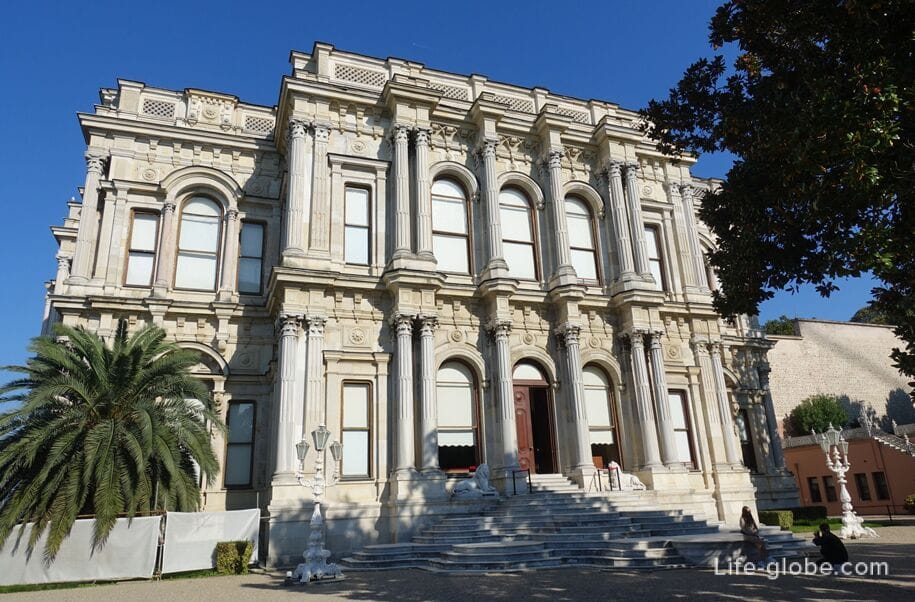
The place where the Beylerbeyi Palace stands today has been used to house various buildings since the Byzantine period.
The first wooden palace on the current site, known as the "Divergent Garden", was erected by order of Sultan Mahmud II in 1808-1839.
After the destruction of the wooden building due to a fire, by order of Sultan Abdul-Aziz in 1863-1865, a new palace was erected, which acquired its current appearance in the neo-Baroque style.
The palace had an adjacent garden with terraces and buildings, most of which are now not preserved.
The palace was used as the summer residence of the sultans, as well as as a venue for important receptions and accommodation of high-ranking government guests. The palace, among others, hosted such guests as: Austro-Hungarian Emperor Franz Joseph I (1869), Empress Eugenie of France (1869), King Nicholas of Montenegro (1874) and German Emperor Wilhelm II.
Since 1912, the palace was the last residence of the deposed Sultan Abdulhamid II. Within the walls of the palace, the Sultan died in 1918.
Today the palace is a museum, which is a palace complex, which includes the main building of the palace, as well as the surrounding garden with terraces and pavilions.
The exterior of the three-storey palace, including the ground floor, reflects Western and eastern styles and has facade coloring in the form of columns with capitals, window openings of various shapes, niches and wide staircases with sculptures of lions.
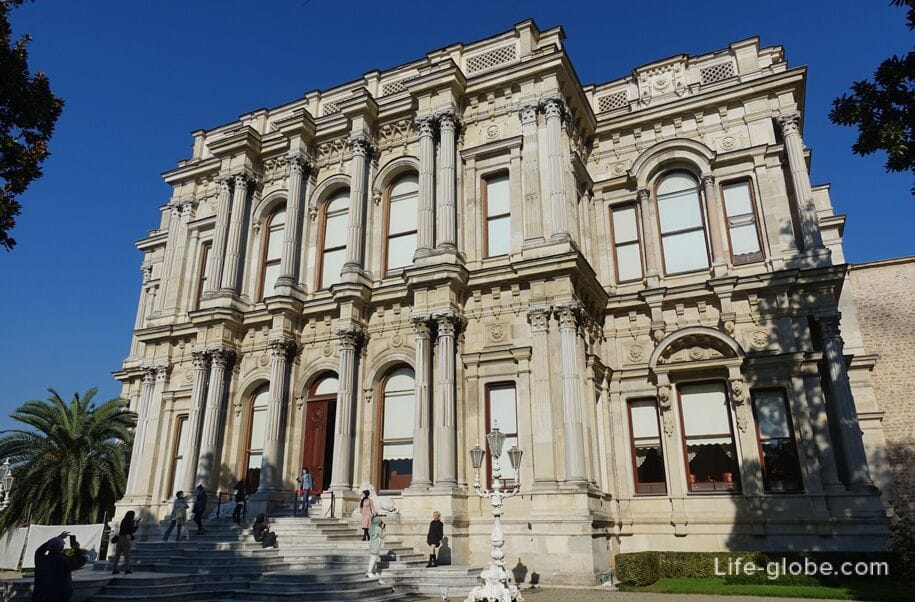
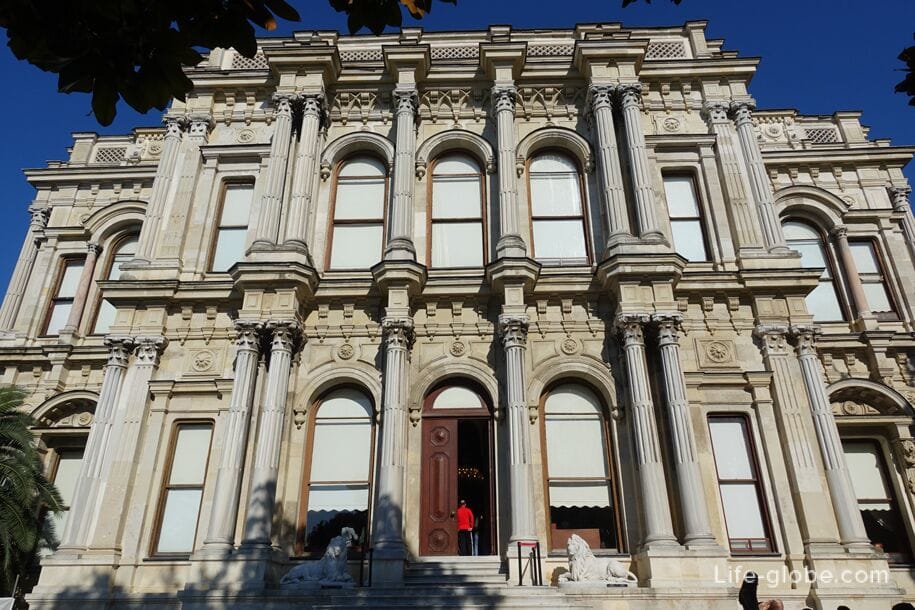
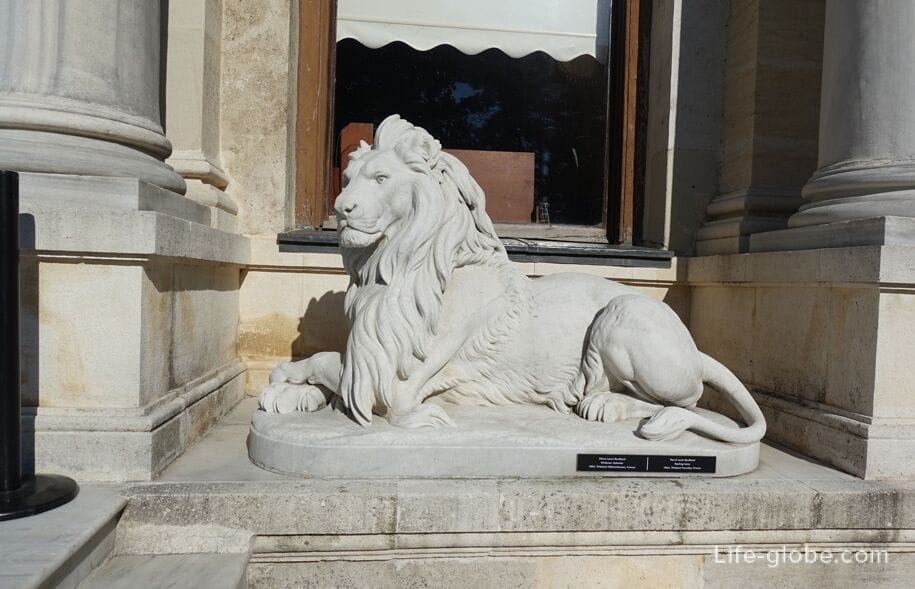

However, despite all the elegance, the Beylerbeyi Palace looks rather restrained compared to the splendor of the earlier palaces of Istanbul - Dolmabahce and Kuchuksu.
The interior of the Beylerbeyi Palace includes the administrative (Mabeyn) and personal (Harem) parts.
In total, there are 24 rooms and 6 halls in the palace, which demonstrate the characteristic features of a Turkish house in the plan.
Most of the palace's floor coverings are made of straw mats brought from Egypt. The rooms of the palace are decorated with Hereke carpets, Baccarat crystal chandeliers, European and Ottoman clocks, Far Eastern porcelain.
One of the most striking parts of the decoration of the Beylerbeyi Palace is the ceiling decorations, which were made by master artists, including from Europe. Most of the decorations contain oriental patterns and natural ornaments.
Furniture is displayed in the halls and rooms of the palace.
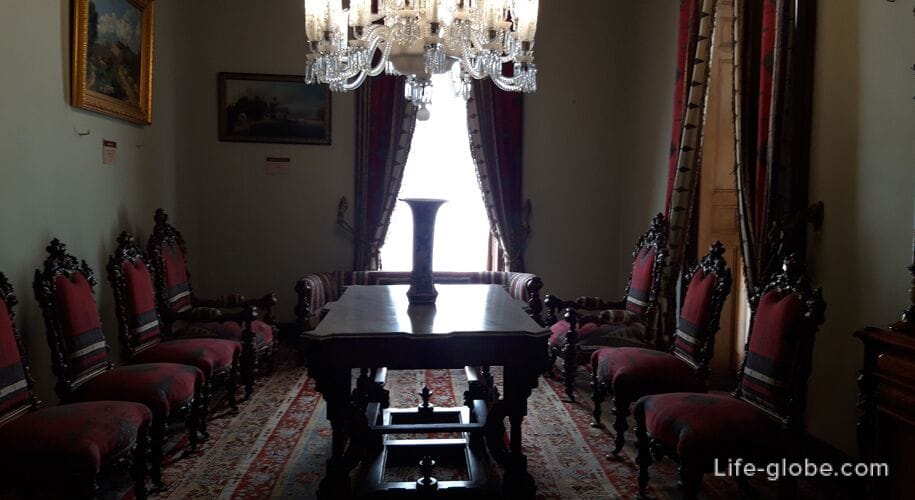
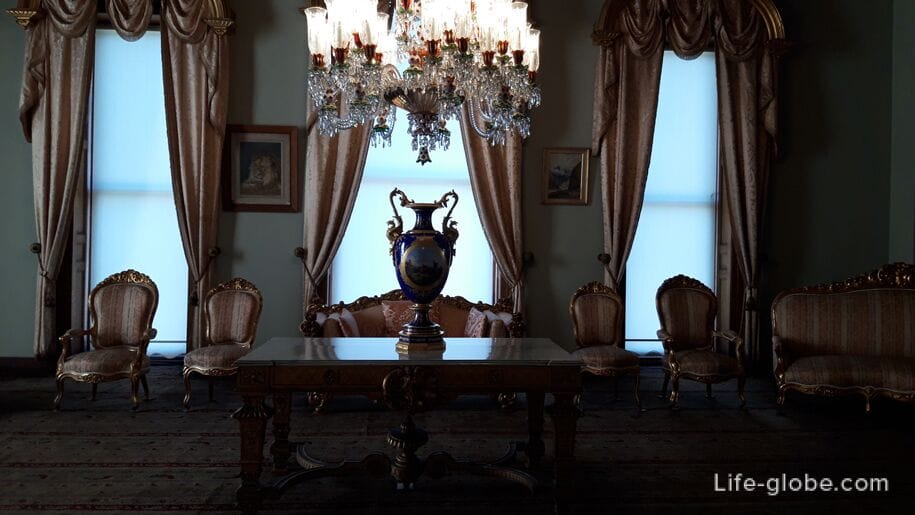
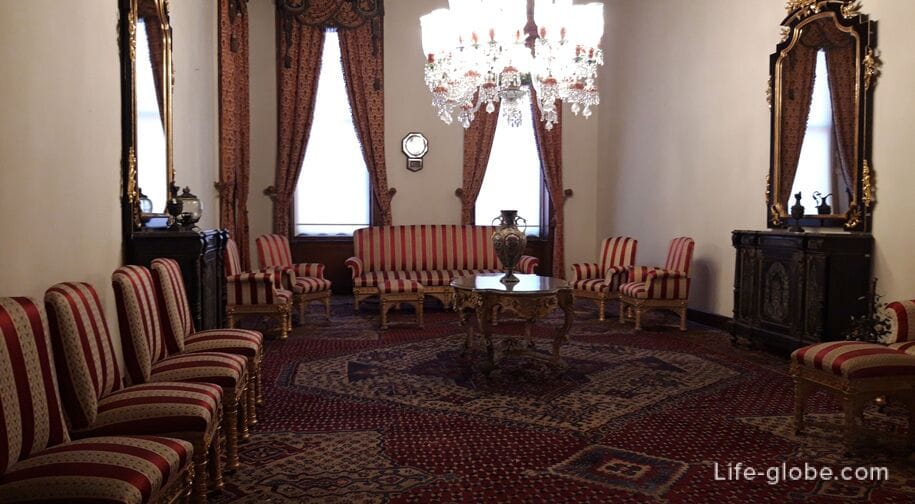

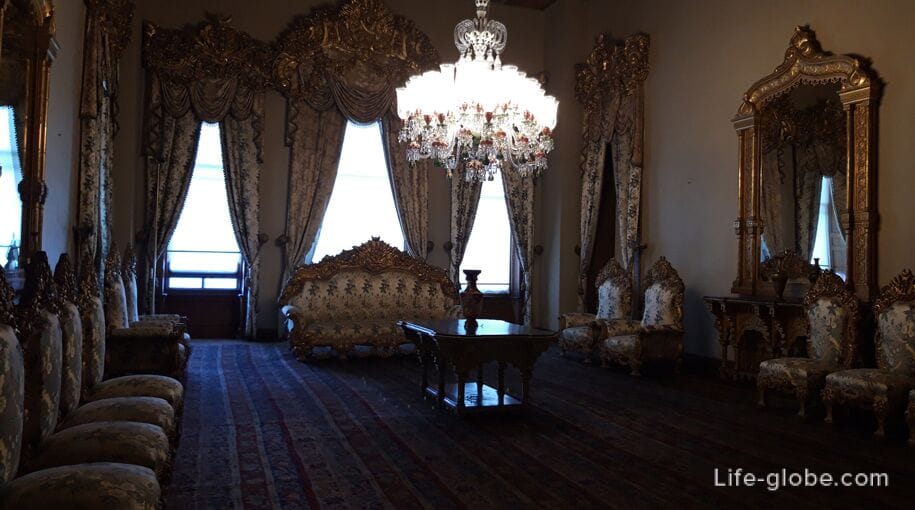

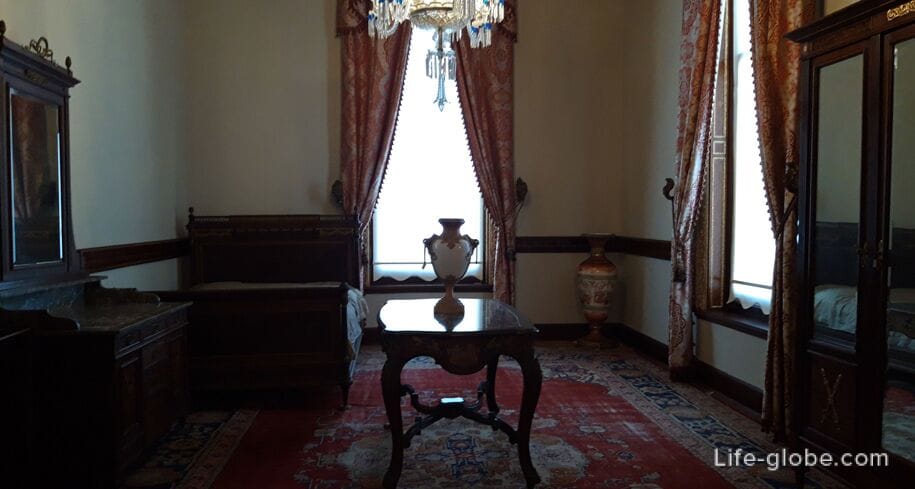
The most magnificent palace premises are considered to be the "Hall with a Swimming Pool" and the "Blue Hall", the design of which stylistically refers to the German Baroque.
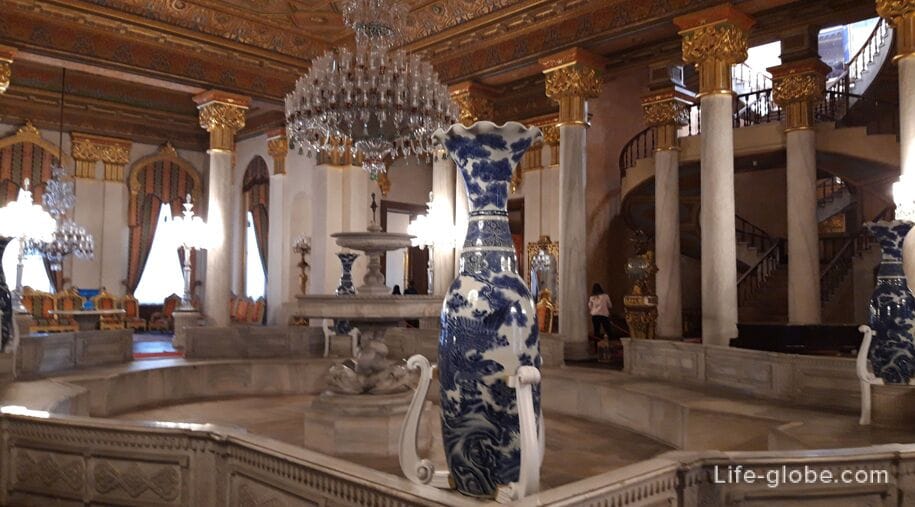

The gardens of Beylerbeyi can be divided into three sections: a garden on the side of the Harem part of the palace, a garden on the side of Mabeyn and gardens that rise up from the palace in terraces.
The garden of the harem part is used today as the entrance part of the palace complex. There is a fountain, a sculpture, a cafe and toilets.
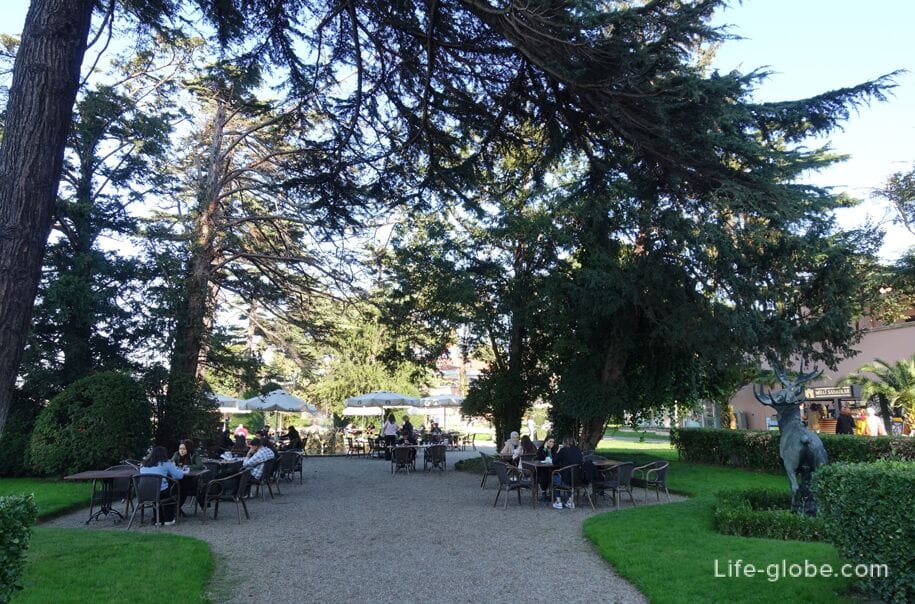

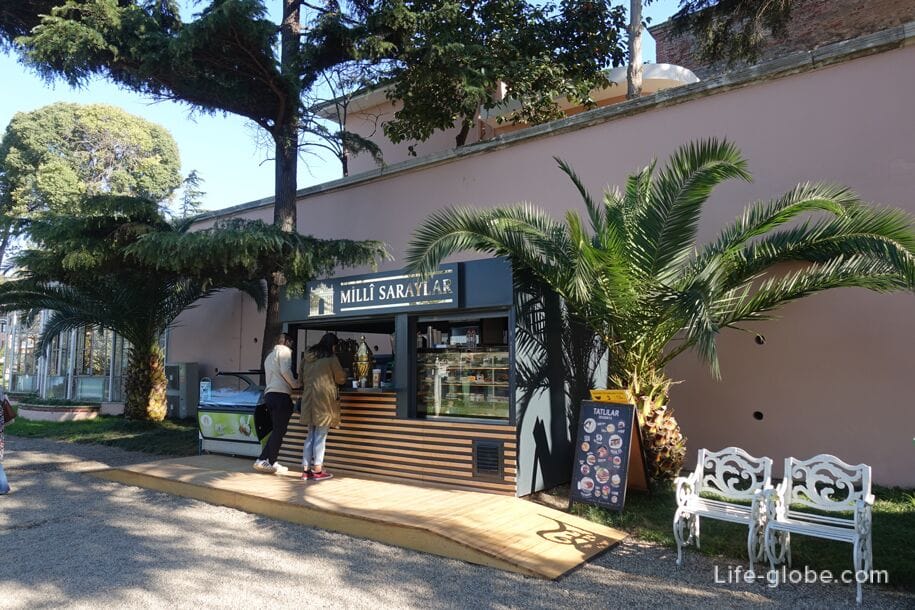

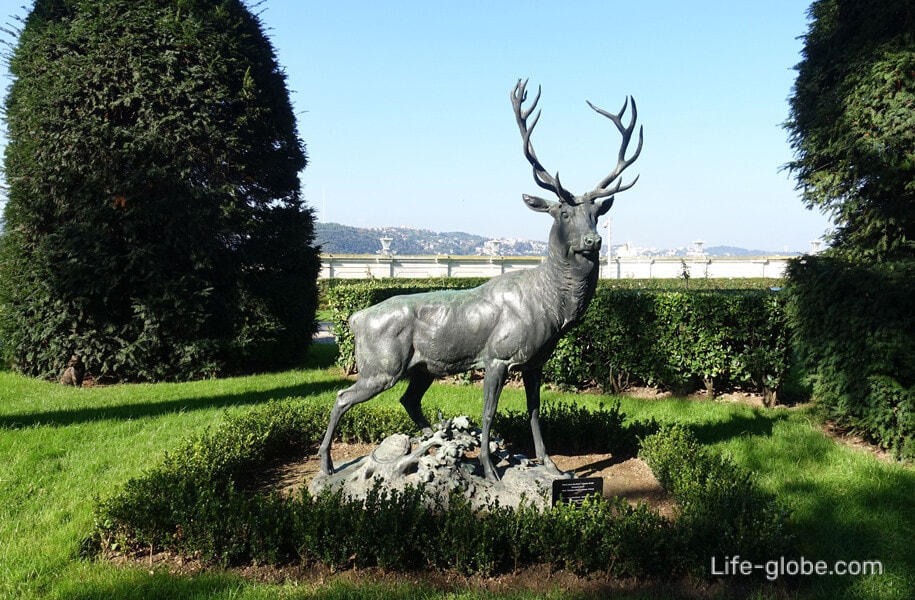
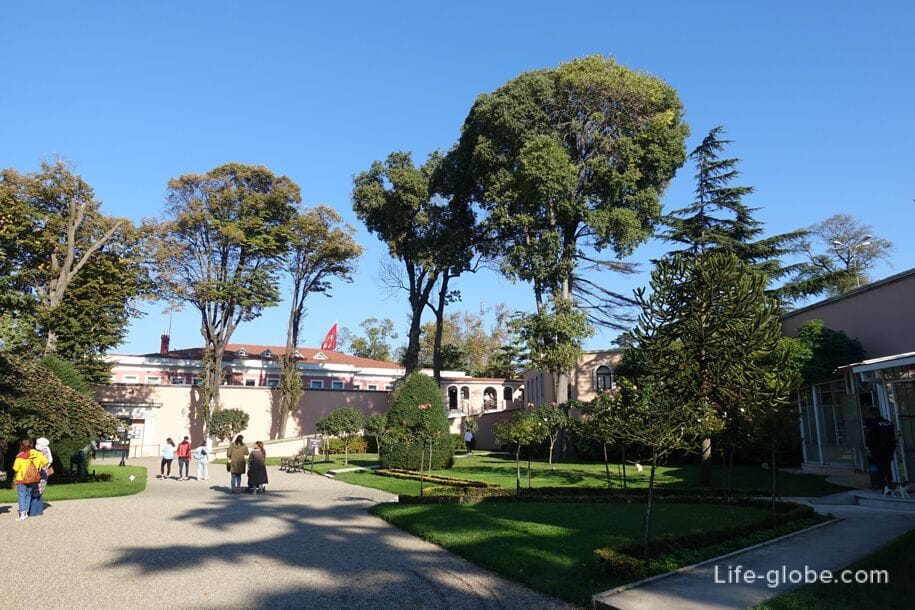
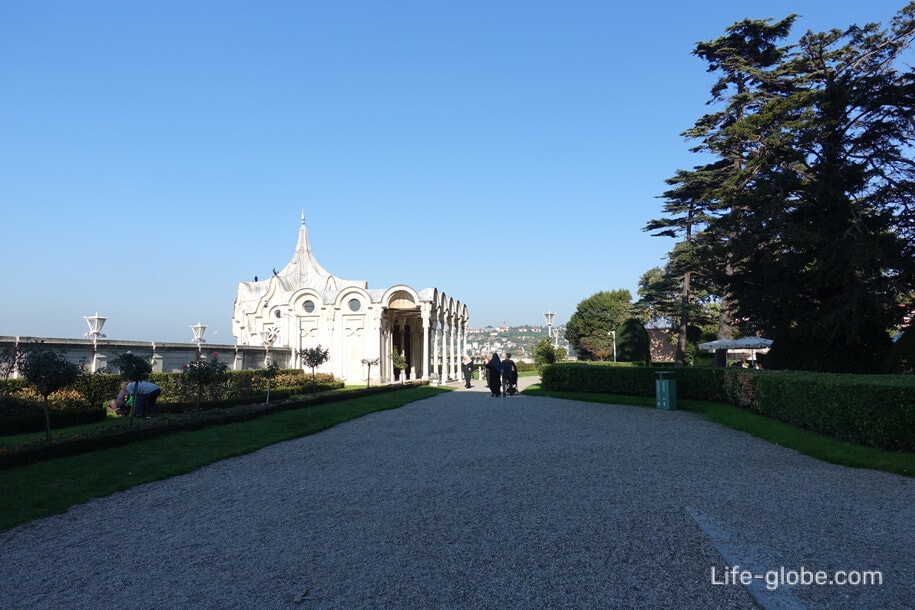
The garden on the Mabein side is more extensive and impresses with trees, a fountain and sculptures.
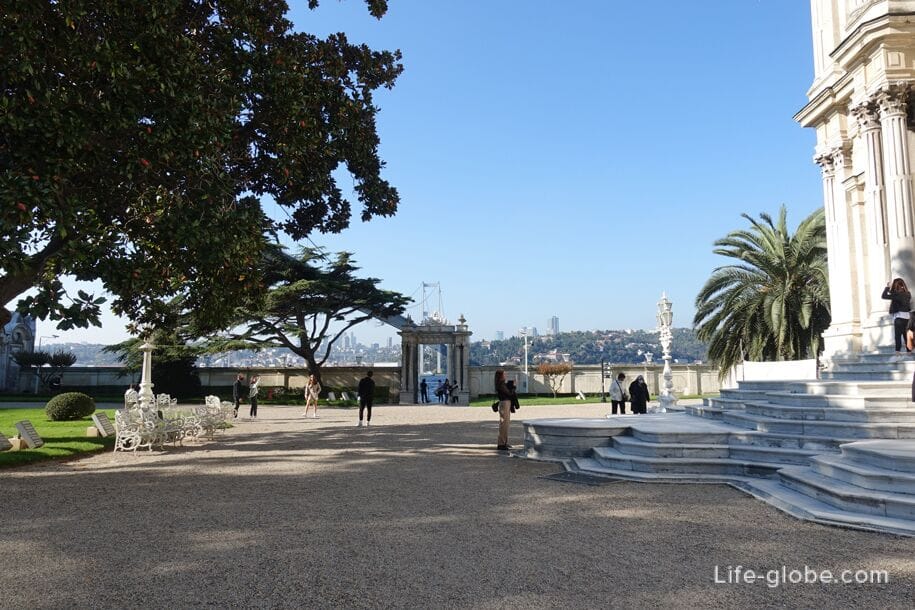

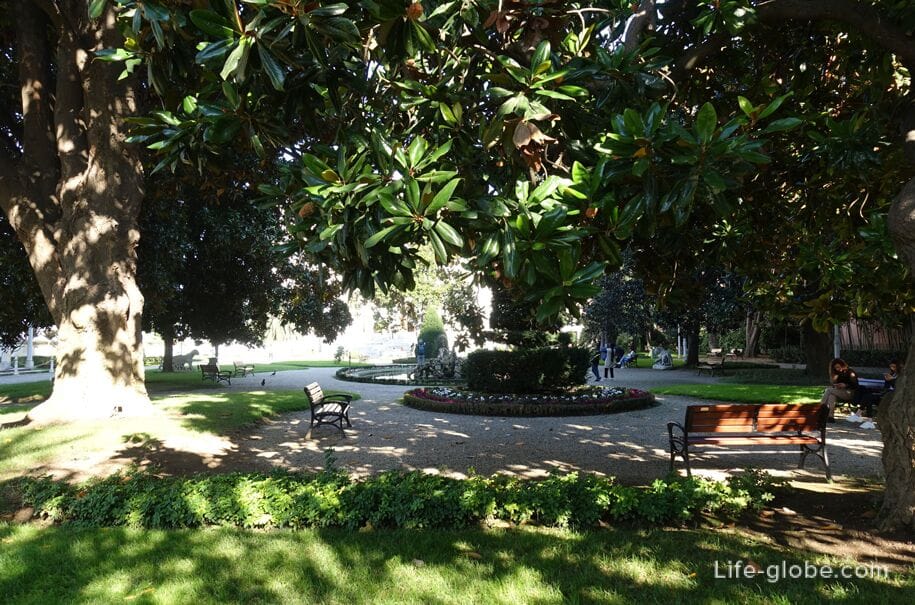
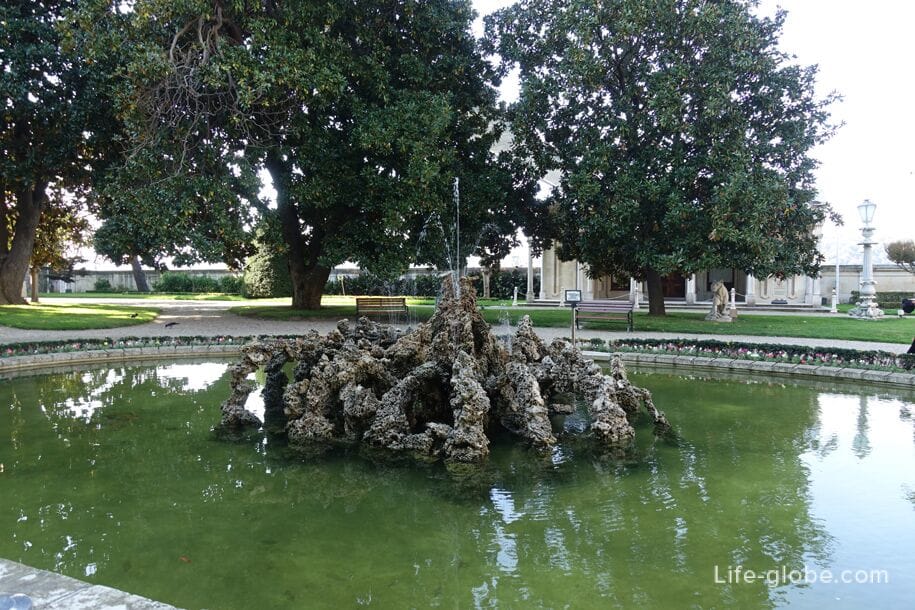


Both from the harem part and from the Mabein side there are Marine pavilions erected in the style of garden gazebos with pointed domed roofs resembling a tent.
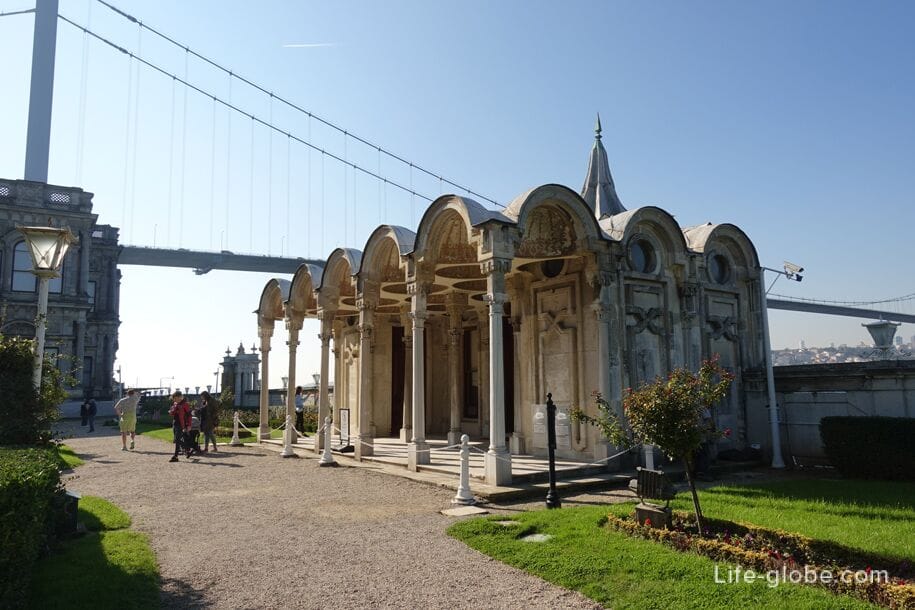
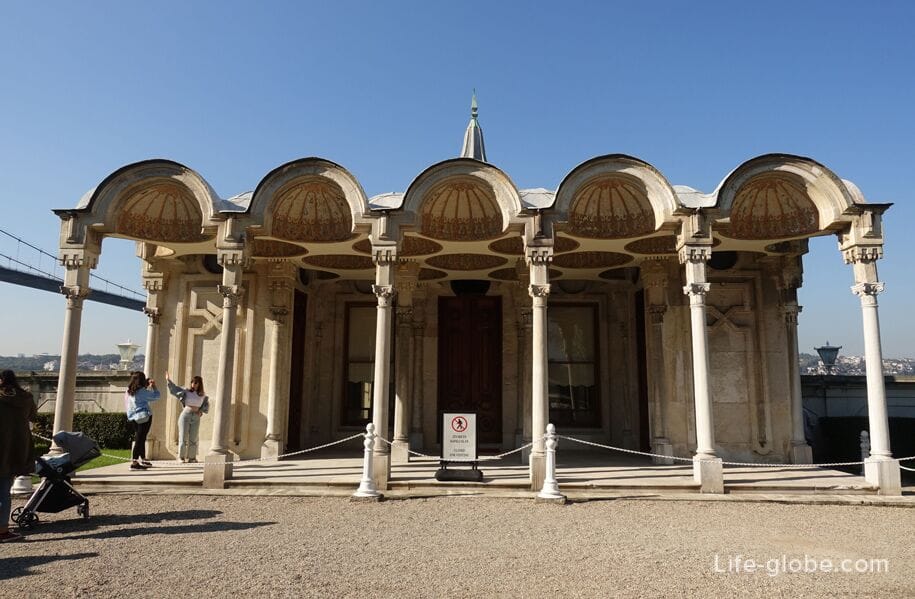

On the side of the two gardens there is a beautiful gate that leads to the now equipped terrace near the waters of the Bosphorus, which offers views of the Strait, the Bosphorus Bridge and the European side of Istanbul.
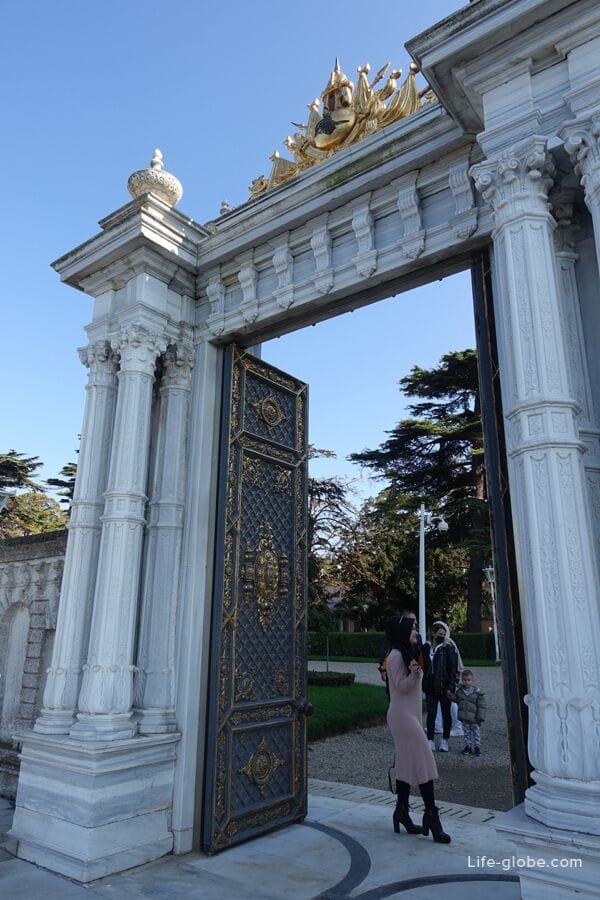


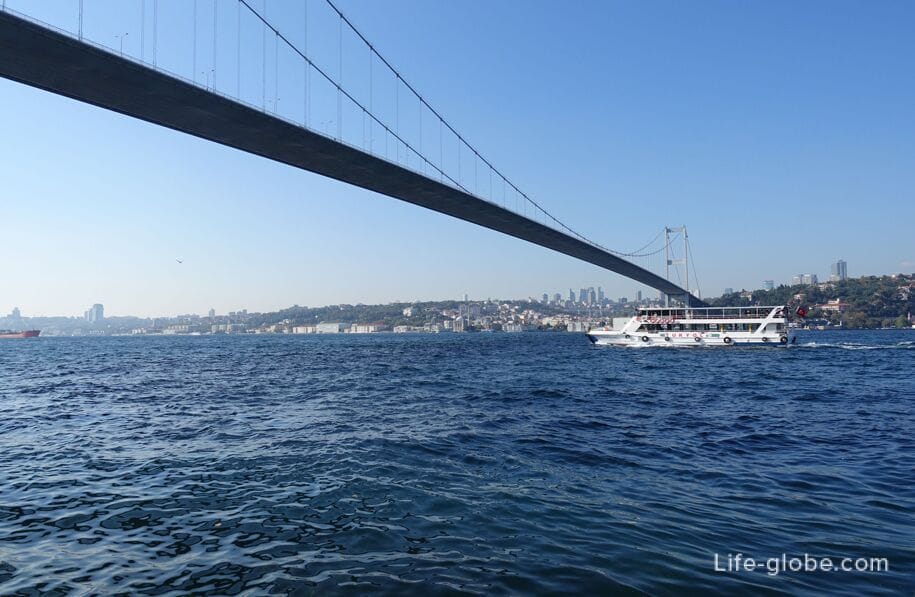
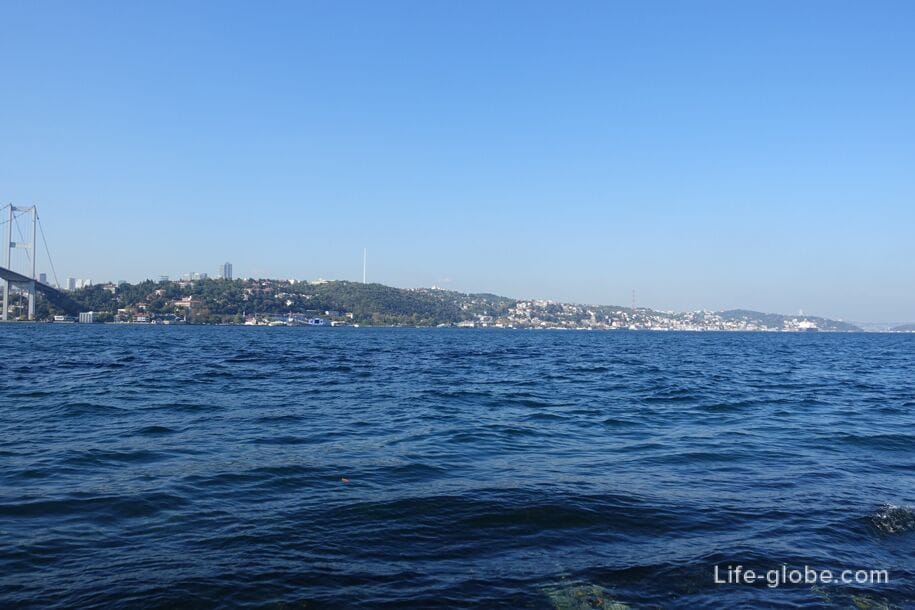
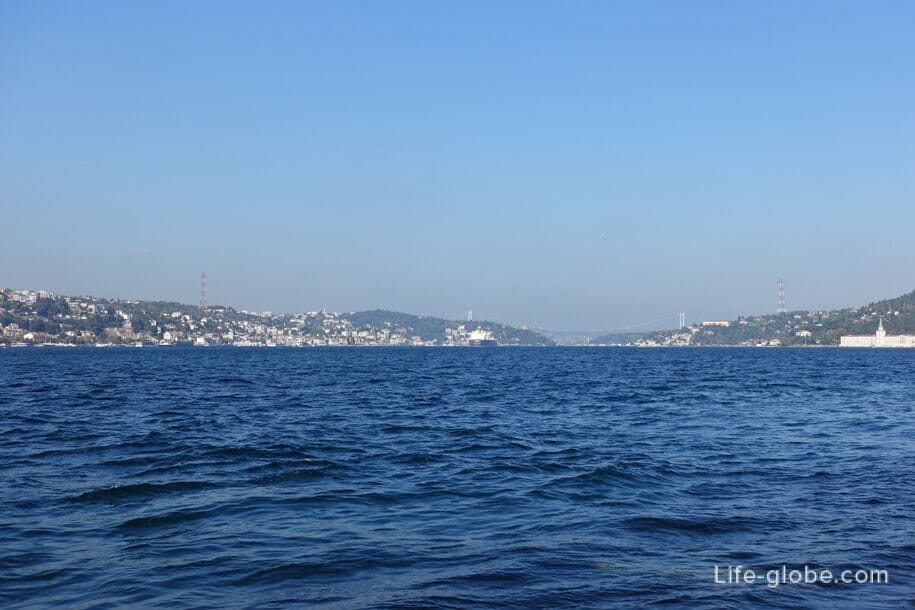
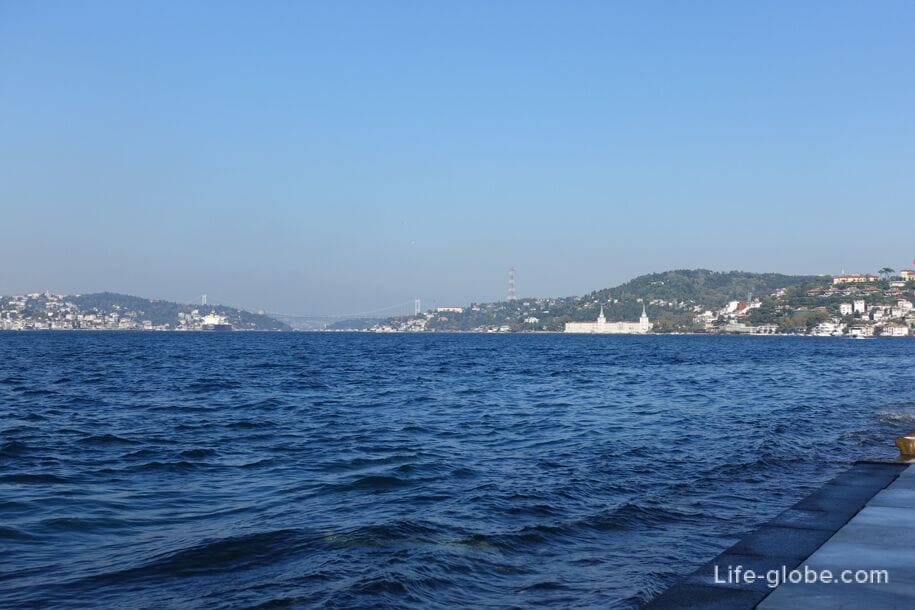
The upper gardens are made in the form of terraces connected by ramps and stairs.
In the gardens: fountains, swimming pools, places for walking and relaxing, as well as a Yellow Pavilion, a Marble pavilion and former stables for the sultan's horses.
The marble pavilion was built of marble (hence the name) as a hunting lodge with an internal fountain and a swimming pool, by order of Sultan Mahmud II in 1829-1831. Since the walls of the pavilion are marble, a pleasant coolness reigned in the room on hot summer days.
The yellow Pavilion consists of three floors, including the basement, and the ceiling ornament and interior decoration made it one of the most original buildings of its time.
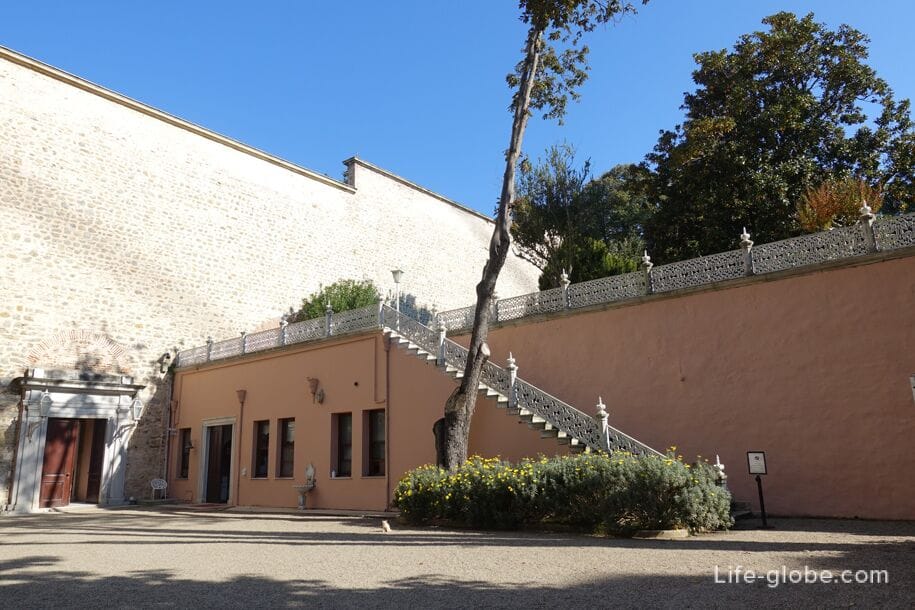
There is a tunnel under the Beylerbeyi Palace (Beylerbeyi Sarayı Tunnel), which was built by order of Sultan Mahmud II in 1829-1832.
The tunnel was used as a road between Uskudar and Beylerbeyi until 1973.
Today the tunnel is used for cultural and artistic purposes.
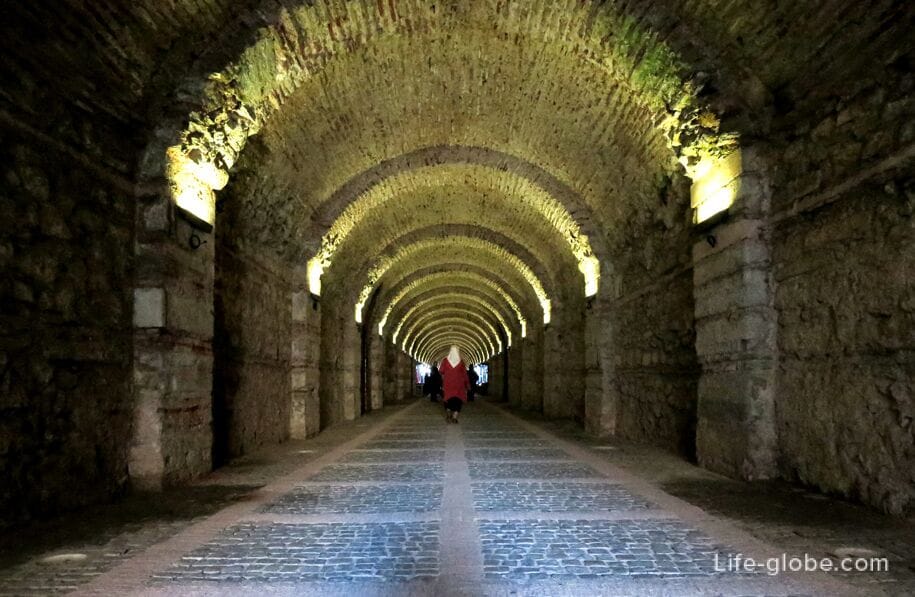
The address of the Beylerbeyi Palace: Beylerbeyi, Abdullahağa Cd., Istanbul.
Entrance to the territory of the palace complex with gardens and to the palace itself is paid. The ticket offices are located at the entrance to the palace garden.
All information about the Beylerbeyi Palace Museum, including opening hours, current ticket prices, etc., we recommend checking before visiting the official website: beylerbeyi-sarayi.
Photo and video shooting is not allowed inside the palace; but it is possible if carefully and imperceptibly (for this reason, the quality of photos of palace interiors in this article suffers).
You can visit the Beylerbeyi Palace on your own by getting by public transport, including ferries to the nearest berths; also by taxi, rented car, or by taking a tour on the Istanbul Hop-On Hop-Off tour bus (there are tickets for 1, 2 or 3 days).
Tickets for the Istanbul sightseeing bus can be purchased here →
All accommodation facilities in Istanbul, including in the historical center, on the European and Asian sides of the city, can be viewed and booked here